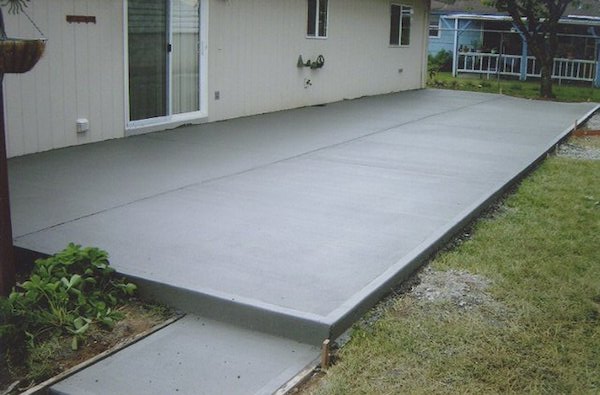
The term “set in concrete” implies permanence, so installing concrete has to be done right the first time. Most homeowners choose concrete installation for sidewalks, driveways, patios, and foundations because it’s inexpensive, quick, and the final results require little maintenance. Plus, if you don’t like its dull-grey color, it can also be stamped and decorated to make it more attractive. Often people hire a licensed concrete contractor for the project since they posses the appropriate equipment and specific knowledge: they know which kind of material is needed, how much is required, how it should be prepared, and they’re responsible for delivery, application, and final finishes.
Warning to Do-It-Yourselfers
You could choose to do this project yourself, but installing concrete is a tricky chore. You have to do all your own prep work and calculations, which is half the struggle. Plus, you’ll still want the pre-made cement to arrive directly to your home via a delivery company in order to make the job go quicker. And quicker is essential. Once poured, concrete has a time limit before it dries, so make sure you’re completely prepared when the cement trucks arrive. Concrete delivery companies may schedule several pours in a row and will charge extra if the driver has to wait on a site because it is not ready.
Appropriate Preparation
Before installing concrete, the site needs proper preparation. Laying the groundwork is the most important step to concrete installation, so it should be done by a professional who has experience with the pre-planning stage.
First, the soil must be compacted and tamped. It must also be graded and sloped for drainage purposes. Next, the soil must be the right consistency: not too wet (or it won’t set) and not too dry (or it’ll dry too fast). Then, wooden forms should be constructed and set into place for the pour.
Ready to start your concrete installation?
Find ProsSince cement structures are known for their toughness; they often receive a lot of abuse from vehicles and foot traffic. Therefore, get cement that is air-entrained, which means it contains air bubbles that will contract and expand in order to absorb shock and adapt to extreme weather changes. Also, you’ll probably want to reinforce the forms with steel rebar grids in order to increase the strength of the sub-structure. These metal bars are suspended above the soil so the cement can be poured above and below the grid itself.
Concrete Installation
Concrete is a mixture consisting of sand, gravel, and Portland cement powder (this powder, once wet, turns into a glue that holds it all together). It’s important to have a cement delivery company prepare the mixture, so that when it arrives it is the correct thickness: enough water should be added to the mixture (this substance is called slump) so that it pours easily without being too wet. Laying concrete is a grueling job. It’s heavy, messy, and can start drying fast, so make sure you make a space available for truck to park that is closest to the site as possible. If it’s a driveway or sidewalk, it may be able to be poured directly into the forms without hauling, but if it’s a back patio, it must be carried via wheelbarrows. So try installing concrete on a cooler, cloudier day: not only does it make the work less strenuous, it also prevents the cement from drying too fast.
Finishing Touches
After laying concrete, it’ll need to be leveled. A board is dragged across the top to make it even with the forms (called screeding). Then it’s smoothed with a wood float: not only does this improve its appearance, it also makes it stronger by driving the larger stones into the cement while bringing the finer particles (sand and grit) to the top. Then the cement is separated from the form and joints are created: cement shrinks as it hardens, so joints prevent it from it cracking. At this point, you could broom the surface to create a decorative brushed texture. Lastly it should be left alone to dry. However, cement doesn’t really dry—it cures. The slower it cures, the stronger the results. So once the contractors leave, you’ll need to wet down the surface for a few days and always cover it with moist burlap or a tarp to slow the process. You could also apply a finish that’ll seal in moisture.
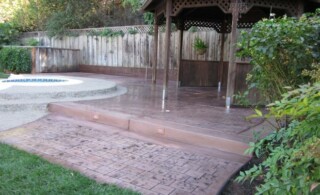 Concrete Cleaning: An Easy Makeover For Your Exterior
Concrete Cleaning: An Easy Makeover For Your Exterior 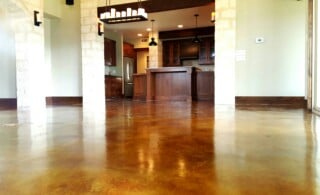 Concrete Flooring – Solid as a Rock
Concrete Flooring – Solid as a Rock 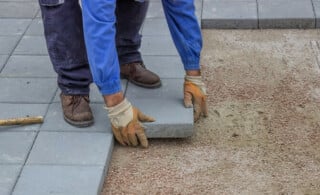 How to Choose a Concrete Contractor
How to Choose a Concrete Contractor 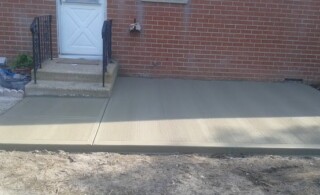 Concrete Mudjacking
Concrete Mudjacking  Explore the Possibilities of Concrete Siding
Explore the Possibilities of Concrete Siding 

Are You Familiar With This Topic? Share Your Experience.